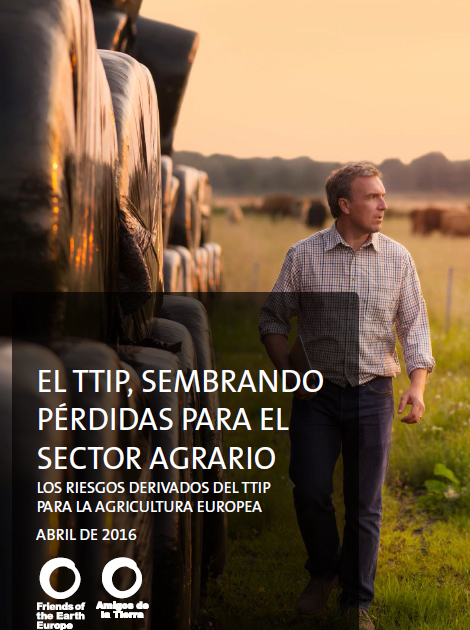La Asociación Transatlántica para el Comercio y la Inversión (TTIP por sus siglas en inglés) podría tener un gran impacto en la agricultura y la producción de alimentos en la Unión Europea. Los lobbies corporativos a ambos lados del Atlántico están buscando un mayor acceso a los mercados , pero los alimentos europeos y americanos se producen con diferentes estándares de seguridad alimentaria (DG de Política Interior, 2015), bienestar animal (Protección Animal Mundial/Humane Society International, 2014) y protección medioambiental (AT Europa/IATP, 2013).
Search results
Showing items 1 through 9 of 119.-
Library ResourceReports & ResearchEurope
-
Library ResourceReports & ResearchDecember, 2016Paraguay
En la mayoría de los casos las iniciativas proponen la zonificación de la agricultura campesina, es decir, la definición de zonas de protección de esta agricultura y en contrapartida, de exclusión de los cultivos producidos en base a fumigaciones y semillas transgénicas.
En la mayoría de los casos, además, no hay un solo actor social preponderante en la consecución de las ordenanzas, sino que varios actores -comités campesinos, pastorales, instituciones ambientalistas, concejales, comisiones vecinales…- que se articulan en plataformas para tener mayores resultados.
-
Library ResourceOctober, 2012
En el presente documento se analiza el carácter estratégico que tiene la mujer rural en relación a la agricultura y la seguridad alimentaria y la forma cómo han ido respondiendo las políticas públicas a este respecto. Esta vinculación se procesa desde varios ámbitos: como procesadora y conservadora de alimentos y, por tanto, como responsables de la alimentación de su familia. No obstante esto, su trabajo es “invisibilizado”.
-
Library ResourceTraining Resources & ToolsPolicy Papers & BriefsNovember, 2011India, Colombia, South America, South-Eastern Asia
Climate change is increasingly being recognised as a global crisis, but responses to it have so far been overly focused on scientific and economic solutions. How then do we move towards morepeople-centred, gender-aware climate change policies and processes? How do we respond to the different needs and concerns of women and men, and also challenge the gender inequalities that mean women are more likely to lose out than men in the face of climate change? This In Brief sets out why it is vital to address the gender dimensions of climate change.
-
Library ResourceTraining Resources & ToolsReports & ResearchNovember, 2011Global
Climate change is increasingly being recognised as a global crisis, but responses to it have so far been overly focused on scientific and economic solutions. How then do we move towards more people-centred, gender-aware climate change policies and processes? How do we both respond to the different needs and concerns of women and men and challenge the gender inequalities that mean women are more likely to lose out than men in the face of climate change? This report sets out why it is vital to address the gender dimensions of climate change.
-
Library ResourceJournal Articles & BooksDecember, 2014
Although women in Ecuador have relatively strong property rights, these are not always honored, resulting in
their experiencing patrimonial violence. This is one of the reasons that, according to our national household assets
survey, the value of women’s assets on average is less than that of men. Nonetheless, there are major differences
in the average value of wealth attained depending on a person’s marital status (being much higher among those
who are married in comparison to living in a consensual union) and in the size of the gender wealth gap (being -
Library ResourceReports & ResearchDecember, 2017Peru, South America
-
Library ResourceJournal Articles & BooksDecember, 2016Colombia, South America
-
Library ResourceJournal Articles & BooksDecember, 2016Colombia, South America
-
Library Resource
Agricultura climáticamente inteligente en Uruguay
Policy Papers & BriefsJanuary, 2016Uruguay, Central America, South AmericaThe climate-smart agriculture (CSA) concept reflects
an ambition to improve the integration of agriculture
development and climate responsiveness. It aims to achieve
food security and broader development goals under a
changing climate and increasing food demand. CSA initiatives
sustainably increase productivity, enhance resilience, and
reduce/remove greenhouse gases (GHGs), and require
planning to address tradeoffs and synergies between these
three pillars: productivity, adaptation, and mitigation [1].
Land Library Search
Through our robust search engine, you can search for any item of the over 64,800 highly curated resources in the Land Library.
If you would like to find an overview of what is possible, feel free to peruse the Search Guide.




